<<back
Lesson Plan INDONESIA
C. Indonesia
C.1. Water and environmentally sustainable development
C.1.1. Overview and Background information:
Title of the lesson
Background/context for particular lesson
- Subjects such as Water Pollution
- Personal and environmental hygiene
- Importance of water in environment
Learning goals/human values
- Responsibility
- Awareness
- Caring for Oneself
- Peace
- Non-violence
Promote standards of personal cleanliness within the setting of the condition where people live
- Caring for the environment
C.1.2. The Lesson Plan
Subject Matter area |
Biology |
Time duration |
Grade |
VII/Junior Secondary School |
|
Topic |
Water pollution |
|
Specific concepts covered in the lesson |
- Clean water and life
- Water pollution and the causes
|
|
Lesson objectives
Lesson objectives |
Learners should be able:
- to explain the importance of water for human life,
- to describe the water pollution and the causes,
- to explain the human roles in the environmental management as to prevent the water pollution
|
|
Materials needed |
- Chart about the causes of water pollution
- Beaker glass
- Drainage or river water
- Mineral / bottled water
- School tap water
|
|
Teaching and Learning Steps |
90 mins |
Introductory or Motivational Activuties |
- Before starting the lesson, teacher divides learners in groups of five
- Teacher distributes the work sheets
- Teacher explains briefly about the values of water for life (human, animal, and vegetation) to learners
- Teacher explains physical properties of clean water such as: odor, colour, and taste
- Teacher explains the objectives of the activities in which learners would work.
|
15 mins. |
Lesson Proper |
Activities (observation):
- Teacher asks learners to observe water from some sources nearby the school.
- Learners in group collect water from the drainage or river close to the school, from tap water, and bottled mineral water as samples.
- Samples of water collected from river are the ones from two different places of river in which the water flows and does not.
- Learners pour each sample of water into separate beaker glasses.
- Learners analyze and note the physical properties of water in each beaker glass, such as: colour and odor.
- Learners discuss their observation in groups, and fill worksheets provided out.
- One learner from each group presents and shares their finding and experience in front of the class.
- Learners from other groups reply and comment on the finding about:
- Water cleanliness and hygiene, indicated by smell and colour.
- Availability of contaminant in water samples.
- Water quality (clean or contaminated)
- Learner’s attitude and behaviour to take action against water pollution and to make efforts for preservation.
- Teacher emphasizes the results of observation about the causes of water pollution, and the ways that learners may do to preserve the pollution.
- Teacher asks learners in groups to write a report, and to write a letter to head of a village nearby the school informing the quality of water, based on the result of their observation.
- Teacher gives another assignment to learners in groups to write a poster about caring for the environment.
|
50 mins. |
Linkage with Human Values |
- Realizing the importance of clean water in daily life
- Being responsible for caring water and environment
|
|
Closure |
Teacher facilitates learners to conclude the lesson on water pollution |
10 mins. |
Attachment 6.C.1.1
Results of Observation
1. Identify materials existing in running-river water, and write their names on appropriate column in the Table 6.1a below:
Table 6.C.1.1a. Materials in running-river water
Water source |
Materials |
organic |
non organic |
Drainage / river |
- |
- |
- |
- |
- |
- |
- |
- |
2. Identify materials existing in unrunning-river water and write their names on appropriate column in the Table 6.1b below.
Table 6.C.1.1b. Materials in unrunning-river water
Water source |
Materials |
Organic |
non organic |
Drainage / river |
- |
- |
- |
- |
- |
- |
- |
- |
3. Identify physical properties of water you have collected from different sources, and put a check (√) which is appropriate in the Table 6.C.1.2 below:
Table 6.C.1.2. Different properties of water from different resources
Water source |
Smell |
No smell |
Colour |
No colour |
Drainage |
|
|
|
|
Taps |
|
|
|
|
Bottled |
|
|
|
|
4. From the Tables 6.C.1.1a and 6.C.1.1b, where may the materials come from?
5. Are the materials mentioned in the Tables 6.C.1.1a and 6.C.1.1b the cause of water pollution?
6. What is the effect of water pollution to human life?
7. From the Table 6.C.1.2, why do the properties of water change?
8. Who should be responsible for caring the environment you observe?
9. Should you be responsible for caring the environment? Why?
10. Describe what you can do to prevent the water pollution!
11. What efforts can you make to decrease the water pollution!
12. Explain the importance of water in our bodies!
13. Is everyone able to get easily hygienic water?
14. Why should we study water pollution, resources, and utilization situation?
Attachment 6.C.1.2
Assessment Sheet
Grade/Level : VII/Junior School
Subject matter : Biology
Topic : Water pollution
What |
How |
Who |
Knowledge
Learners are able to describe properties of hygienic water, to explain water pollution and causes, and to have ideas to avoid water pollution. |
Written test |
Teacher |
Problem Solving Skills Learners are able to write a report on prevention of water pollution |
Report paper |
Teacher |
Scientific Inquiry Skills Learners can observe and analyze water situation around the school |
Observation table |
Teacher |
Attitude expression
Learners express their awareness of preventing water pollution |
Report paper |
Teacher |
Value Expression
Learners express their own awareness and responsibility for taking care of water quality, and their appreciation of water utilization |
Reflective poster |
Teacher |
Personal Expression
Learners have an action to clean up the school and surrounding, especially water drainage and/or river. |
Reflective poster |
Teacher |
Attachment 6.C.1.3
Written Test
1. What are the physical properties of hygienic water?
2. Why do we need the hygienic water?
3. What is water pollution?
3. What are the causes of water pollution?
4. Who are responsible for taking care of water quality?
5. Why should we take care of our water quality?
6. What can we do to decrease the water pollution?
7. How precious is hygienic water for our bodies?
8. Does everyone get easily hygienic water?
Scoring guide for the Report Paper
Item |
Scale |
Mark |
|
A |
B |
C |
D |
E |
|
- Concept clearance
- Sequence
- Creativity
- Human values and moral covered
|
|
|
|
|
|
|
Note:
A: Very Good B: Good C: Fair D: poor E: failed
C.2. Water for health, sanitation, and recreation
C.2.1. Overview and Background information:
- Title of the lesson
- Care of my hand (Hand cleanliness)
- Background/context for particular lesson
- Subjects such as sanitation and body education
- Personal and environmental hygiene
- Importance of water, human dignity and social equity
- Learning goals/human values
- Responsibility
- Cleanliness
- Caring for Oneself
- Awareness
- Non-violence
- Promote standards of personal cleanliness within the setting of the condition where people live
C.2.2. The Lesson Plan
Subject Matter area |
Sanitation and Physical Education |
Time duration |
Grade |
2 / elementary School |
|
Topic |
Hand cleanliness |
|
Specific concepts covered in the lesson |
- Keeping body healthy and its importance
- Saving water
|
|
Lesson objectives |
Learners should be able:
- To explain the significance of keeping hands hygienic
- To describe the ways to keep hands hygienic
- To describe the ways to save water for washing hands
|
|
Materials needed |
A poster |
|
Teaching and Learning Steps |
70 mins |
Introductory or Motivational Activities |
Expression:
- Washing hands as an important habit to keep them clean and hygienic
- Discuss the expression
|
15 mins. |
Lesson Proper |
- Talking about the significance of keeping hands hygienic
- Talking about the meaning of washing hands before and after having an activity by use of a poster.
- Discuss the harm of doing an activity with dirty hands.
- Talking about saving water for hand washing.
- Dividing learners in groups by which posters (Attachment 6.C.2.1) about keeping hands hygienic and saving water for hand washing (Attachment 6.C.2.3) are written.
- Giving each learner an individual task to express their own idea about keeping hands hygienic and saving water for washing hands.
|
40 mins. |
Linkage with Human values |
- Caring and awareness of clean and healthy bodies
- Being respect and responsible for saving water and its resources
|
|
Closure |
- Learners read and discuss their posters that are displayed on the wall of the class
- The teacher concludes the lesson.
|
15 mins. |
Attachment 6.C.2.1
Poster of Take Care your hands
When do we have to wash our hands?
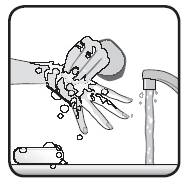
BEFORE:
- cooking foods
- eating
- touching an ill person
- Touching an injury or cut.
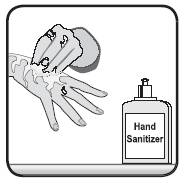
AFTER:
- using the bathroom
- blowing your nose, coughing, or sneezing
- touching things that may be covered by germs, such as:
- Diapers or a child who has used the toilet
- Uncooked / unprocessed foodstuff
- Animals or animal waste
- Garbage / trash
- Things touched by flood water
- A sick person
- Cuts, sores, and wounds.
Attachment 6.C.2.2
Assessment
What |
How |
Who |
Knowledge
The learner will be able to explain the importance of keeping hands hygienic and of saving water to wash hands. |
Written test |
Teacher |
Problem Solving Skills
None |
|
Teacher |
Scientific Inquiry Skills
None |
|
Teacher |
Attitude expression
Learners express their attentiveness of keeping hands hygienic and of saving water for washing hands. |
Observation List |
Teacher |
Value Expression
Each learner express his/her awareness to keep hands hygienic, and his/her responsibility to save water resources in school |
Individual activities |
Teacher |
Personal Expression |
Reflective poster |
Teacher |
Written Test
1. Why should we keep our hands clean and hygienic?
2. When do we have to wash our hands?
3. Describe the right ways to wash our hands without wasting the precious water!
Attachment 6.C.2.3
Individual activities
Please, describe the images below as you can see!
1. Proper ways to wash hands

2. Proper ways to save water

C.3. Water, human dignity and social equity
C.3.1. Overview and Background information:
- Title of the lesson
- Topic : Water Conservation
- Background/context for particular lesson
Subjects such as sanitation and education
- Personal and environmental hygiene
- Importance of water, human dignity and social equity
- Learning goals/human values
- Love: caring others
- Right conduct
- Truth
- Peace: self confidence
- Non-violence: Wisdom, respect oneself
- Promote standards of personal cleanliness within the setting of the condition where people live
C.3.2. The Lesson Plan
Subject Matter area |
Civics Education |
Time duration |
Grade |
VII/Junior Secondary School |
|
Topic |
Water Conservation |
|
Specific concepts covered in the lesson |
- Water conservation
- Good / bad behaviour of using water at home
|
|
Lesson objectives |
Learners should be able:
- to describe the ways to use water at home properly
- to describe bad behaviours of wasting water at home
|
|
Materials needed |
- Poster about suggested ways to conserve water
- Checklist
|
|
Teaching and Learning Steps |
70 mins |
Introductory or Motivational activities |
- Teacher divides learners into groups of four or five
- Teacher explains activities that each group have to do
|
15 mins. |
Lesson Proper |
- Teacher explains how to conserve the nature, especially water
- Teacher asks all learners to describe ways to use water at home in the checklists provided (Attachment 6.C.3.1).
- Learners are asked to count total amount of water used at home a day (for: toilet, faucet, bathtub, shower, washing clothes or dishes, drinking, watering lawn, and washing car)
- Learners discuss what, how, and how much water was being used at their own homes.
- Teacher asks learners to describe activities that may waste water or use water in excessive amount.
- Learners discuss any possible ways that can conserve water after having knowledge of the use of water at their own homes (Attachment 6.C.3.2)..
- After the discussion, teacher shows the posters about the tips on the ways to save water at homes (Attachment 6.C.3.3).
- Each learner writes a description paper on the conservation of water at home or at school environment
- Each learner writes a poster for display on the conservation of water. On the posters, learners should write about activities in daily life that can conserve and waste water based understanding from discussion (home work).
|
|
Linkage with Human Values |
- Self-awareness, self-control, and wisdom of limited water resources
- Caring for and respecting to others
- Discipline and obedience to social and ethical rules, and religions
|
|
Closure |
Learners share the posters with the class and try to incorporate experiences they have learned at home |
15 mins. |
Attachment 6.C.3.1
Check list of the use of water as personal habits
Saving water is easy when you think about it. Here is an easy way to see how wise water utilization around your home. Give a check (√) behind each statement that describes your habits to use water, and then calculates the total scores you collect to see how you are doing. It might surprise you just how easy it is to save water and money around your home.
There are a number of ways to save water…..
Activities |
Remarks |
Often |
Sometimes |
Never |
1. Keep shower to under 5 minutes |
|
|
|
2. Use only a little water in the bathtub |
|
|
|
3. Turn off the water while brushing your teeth |
|
|
|
4. Put water in the sink when washing up |
|
|
|
5. Flush the toilet only when necessary. Don't use it to flush tissues |
|
|
|
6. Use a broom to clean the driveway or sidewalk |
|
|
|
7. Use a bucket when washing the car |
|
|
|
8. Use a turn off nozzle on the end of the hose to adjust the water flow and turn the water off and on |
|
|
|
9. Turn water faucet off tight |
|
|
|
10. Put water in the kitchen sink to wash and rinse dishes |
|
|
|
11. Run the dishwasher only when it is full |
|
|
|
12. Run the washing machine only when it is full |
|
|
|
Your Score |
|
|
|
Score guide:
Often : 2
Sometimes : 1
Never : 0
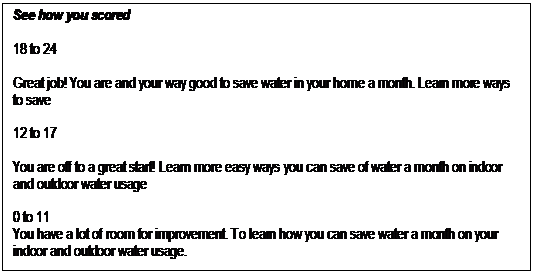
Attachment 6.C.3.2
Poster on Water Conservation
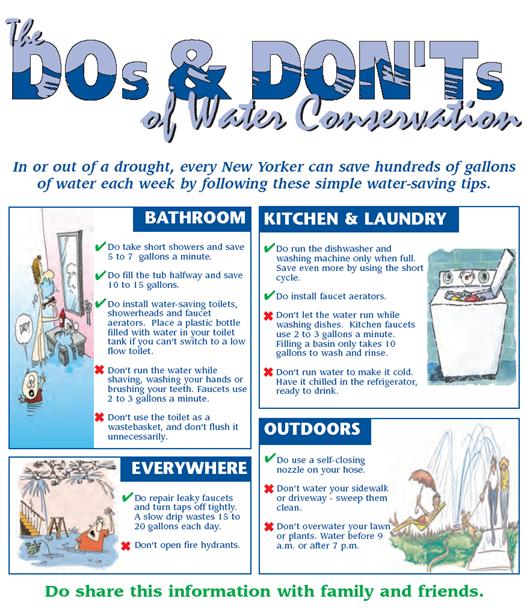
Attachment 6.C.3.3
Ways to save water at home

In the home...
1. Check for hidden water leaks
Read the house water meter before and after a two-hour period when no water is being used. If the meter does not read exactly the same, there is a leak.
2. Check your toilets for leaks
Put a little food colouring in your toilet tank. If, without flushing, the colour begins to appear in the bowl within 30 minutes, you have a leak that should be repaired immediately. Most replacement parts are inexpensive and easy to install.
3. Don't use the toilet as an ashtray or wastebasket
Every time you flush a cigarette butt, facial tissue or other small bit of trash, five to seven gallons of water is wasted.
4. Put plastic bottles in your toilet tank
To cut down on water waste, put an inch or two of sand or pebbles inside each of two plastic bottles to weigh them down. Fill the bottles with water, screw the lids on, and put them in your toilet tank, safely away from the operating mechanisms. This may save ten or more gallons of water per day. Be sure at least 3 gallons of water remain in the tank so it will flush properly. For new installations, consider buying "low flush" toilets, which use 1 to 2 gallons per flush instead of the usual 3 to 5 gallons.
Replacing an 18 liter per flush toilet with an ultra-low volume (ULV) 6 liter flush model represents a 70% savings in water flushed and will cut indoor water use by about 30%.
5. Insulate your water pipes
It's easy and inexpensive to insulate your water pipes with pre-slit foam pipe insulation. You'll get hot water faster plus avoid wasting water while it heats up.
6. Install water-saving shower heads and low-flow faucet
Your local hardware or plumbing supply store has inexpensive water-saving shower heads or restrictors that are easy for the homeowner to install. Also, long, hot showers can use five to ten gallons every unneeded minute. Limit your showers to the time it takes to soap up, wash down and rinse off. Also, all household faucets should be fit with aerators. This single best home water conservation method is also the cheapest!
7. Take shorter showers
One way to cut down on water use is to turn off the shower after soaping up, then turn it back on to rinse. A four-minute shower uses approximately 20 to 40 gallons of water.
8. Turn off the water after you wet your toothbrush
There is no need to keep the water running while brushing your teeth. Just wet your brush and fill a glass for mouth rinsing.
9. Rinse your razor in the sink
Fill the sink with a few inches of warm water. This will rinse your razor just as well as running water, with far less waste of water.
10. Check faucets and pipes for leaks
A small drip from a worn faucet washer can waste 20 gallons of water per day. Larger leaks can waste hundreds of gallons.
11. Use your dishwasher and clothes washer for only full loads
Automatic dishwashers and clothes washers should be fully loaded for optimum water conservation. Avoid the permanent press cycle, which uses an added 20 liters (5 gallons) for the extra rinse. For partial loads, adjust water levels to match the size of the load. If you're in the market for a new clothes washer, consider buying a water-saving frontload washer.
12. Minimize use of kitchen sink garbage disposal units
In sink 'garburators' require lots of water to operate properly, and also add considerably to the volume of solids in a septic tank which can lead to maintenance problems. Start a compost pile as an alternate method of disposing food waste.
13. When washing dishes by hand, don't leave the water running for rinsing
If your have a double-basin, fill one with soapy water and one with rinse water. If you have a single-basin sink, gather washed dishes in a dish rack and rinse them with a spray device or a panful of hot water.
14. Don't let the faucet run while you clean vegetables
Just rinse them in a stoppered sink or a pan of clean water.
15. Keep a bottle of drinking water in the fridge
Running tap water to cool it off for drinking water is wasteful.
In the yard and garden...
16. Water your lawn only when it is necessary
A good way to see if your lawn needs watering is to step on the grass. If it springs back up when you move, it doesn't need water. If it stays flat, the lawn is ready for watering. Letting the grass grow taller (to 3") will promote water retention in the soil.
17. Deep-soak your lawn
When watering the lawn, do it long enough for the moisture to soak down to the roots where it will do the most good. A light sprinkling can evapourate quickly and tends to encourage shallow root systems. Put an empty tuna can on your lawn - when it's full, you've watered about the right amount. Visit our natural lawn care page for more information.
18. Water during the cool parts of the day; avoid watering when it's windy
Early morning is generally better than dusk since it helps prevent the growth of fungus. Watering early in the day is also the best defence against slugs and other garden pests. Try not to water when it's windy - wind can blow sprinklers off target and speed evapouration.
19. Use efficient watering systems for shrubs, flower beds and lawns
You can greatly reduce the amount of water used for shrubs, beds and lawns with strategic placement of soaker hoses, rain barrel catchment systems and simple drip-irrigation systems.
20. Plant drought-resistant shrubs and plants
Many beautiful shrubs and plants thrive with far less watering than other species. Replace herbaceous perennial borders with native plants. Consider applying the principles of xeriscope for a low-maintenance, drought resistant yard.
21. Put a layer of mulch around trees and plants
Mulch will slow evapouration of moisture while discouraging weed growth.
22. Don't water the gutter
Position your sprinklers so water lands on the lawn or garden, not on paved areas. Also, avoid watering on windy days.
23. Don't run the hose while washing your car
Clean the car using a pail of soapy water. Use the hose only for rinsing.
24. Use a broom, not a hose, to clean driveways and sidewalks
25. Check for leaks in pipes, hoses, faucets and couplings
Leaks outside the house may not seem as bad since they're not as visible. But they can be just as wasteful as leaks indoors. Check frequently to keep them drip-free. Use hose washers at spigots and hose connections to eliminate leaks.
Attachment 6.C.3.4
Assessment
What |
How |
Who |
Knowledge
The learners are able to answer the written test |
Written test |
Teacher |
Problem Solving Skills
Learners are able to fill out the worksheet |
Checklist the personal habits |
Teacher |
Scientific Inquiry Skills
Learners are able to find out solution based on the observation. |
|
Teacher |
Attitude expression
Learners express their happiness and joy during observation activities |
Description paper |
Teacher |
Value Expression
Learners express their opinion of awareness and responsibility for taking care nearby environment and for appreciation to water utilization |
Description paper |
Teacher |
Personal Expression |
Reflective poster |
Teacher |
Written Test
- What does water conversation mean?
- Why must we conserve water?
- Mention the use of water at home?
- How can we conserve the water?
C.4. Water in culture, traditions and religious practices
C.4.1. Overview and Background information:
- Title of the lesson
- The ways of Ablution (Wudhu)
- Background/context for particular lesson
Subjects such as religious practices
- Personal and attitudes
- Importance of water in religious practices
- Learning goals/human values
- Love
- Right conduct: Believe in God, discipline.
- Truth: able to do ablution
- Peace: respect to others
- Non-violence
- Promote standards of personal habits during the use of water in the ablution (purification).
- Be saving in he use of water
C.4.2. The Lesson Plan
Subject Matter area |
Islam Religion |
Time duration |
Grade |
2 / elementary School |
|
Topic |
The use of water in religious practices (ablution) |
|
Specific concepts covered in the lesson |
Religion and Human being responsibilities
Practicing Ablution |
|
Lesson objectives |
Learners should be able:
- To mention the ways of ablution (Wudlu)
- To practice the ways of ablution
|
|
Materials needed |
- A poster about the ways of ablution
|
|
Teaching and Learning Steps |
70 mins |
Introductory or Motivational Activities |
Expression:
"Cleanliness is part of being a believer "
Discuss the Expression |
15 mins. |
Lesson Proper |
- Teacher explains the importance of the purity of water for ablution, and Islam-suggested ethics in bathrooms refer to concepts of ablution (Attachment 6.C.4.1) .
- Teacher explains the definition of ablution
- Teacher shows a picture on right steps on how to do ablution
- Teacher demonstrates ablution step by step as suggested by the picture (Attachment 6.C.4.2).
- Learners practice the ablution.
- Teacher assesses learners’ practice using a scale test (Attachment 6.C.4.3).
|
40 mins. |
Linkage with Human Values |
- Discipline and obedience to the Creator
- Cleanliness and health of bodies
- Happiness and serene
- Self-awareness and self-control of water and resources
|
|
Closure |
- Teacher and learners conclude the importance of water for body cleanliness and Islamic religion
|
15 mins. |
Attachment 6.C.4.1
Concept of Ablution
Ablution is one of the prominent features of Islam. It means thorough purity and cleanliness of body, clothes, place and all aspects of Muslim’s life.
In the foregoing pages we discussed matters of purity of faith and heart. Here we will discuss matters of purity of body and other relevant aspects of material purity and cleanliness. Islam in fact takes care of the purity of material purity of both the heart and the soul as well as the body and material aspects of life.
Muslims are called upon to be pure and clean in many of the Qur’an injunctions such as the following verse:
“Allah loves those who turn unto Him in repentance and loves those who purify themselves.” 2-222.
A. “Purity” of Water
It should be pointed out that pure water is used essentially in matters of purification and cleanliness of the body totally or partially. Hence below the purity of water is briefly discussed.
First: Ordinary water is Thahur (fresh and pure), that means it is pure in itself and purifies other things. Among its division are:
- Rainfall, snow and hail; Allah said:
“..And We sent down pure water from the sky.” (V.25:48)
- Water of springs and rivers,
- Sea water, as the Prophet (P.B.U.H) said:
“Its water is purifying and its creatures are Halal (good to consume)”.
- Zam-zam water (water from a well in Mecca).
It is established that the Prophet (P.B.U.H) called for a bucket of Zam-zam water, then drank from it and performed ablution (narrated by Ahmad).
- Water which has changed due to stagnation for a long time, or by tree leaves settling in it or moss growing in it, because it is still valid to call it “water” without qualifying the word therefore it is valid to use for purification.
Second: Used water, that is, water which flows off the limbs when performing ablution preserve its purifying quality, just like ordinary water, based on the fact that it started out as purifying and there is no Dalil (evidence) from the Shariah (Islamic Laws) indicating a change in its status.
Third: Water mixed with any clean substance, for instance soap or saffron, or flour, etc. remains purifying (Thahur) as long as the quality of the adulterant is not enough to cause us to stop calling the mixture “water”. If it exceeds that limit when we can no longer call it simply water, then it is Thahur: pure in itself, but incapable of purifying anything else.
Fourth: Water mixed with Najasah (filthy substances), this can occur in one of the two stages:
- The taste or colour or smell of the water changes due to the Najasah, in which case, the water is not permissible to be used for purification by the consensus of the Islamic scholars.
- None of the three qualities of the water changes: in this case it remains purifying whether it’s a little or a log. As the Prophet (P.B.U.H) said:
“Water purifying, nothing makes it filthy.” (narrated by Ahmad and others).
And in this case the water has retained the name “Water” without the need to qualify the word.
B. Ethics of Going to Bathroom
- Don’t take anything containing the Name of Allah into the bathroom, unless there is fear of losing it by leaving it outside, or if it is wrapped up.
- To be away from people and screened, especially when defecating.
- To say the following supplication before entering the bathroom, or if one is outdoors, before removing clothes, as the Prophet (P.B.U.H) said:
“In the Name of Allah, O Allah I seek refuge with You from the evils.” And after leaving the toilet too said: “Your forgiveness (O Lord).” Tirmidhi)
4. To refrain from speaking altogether, whether it be Dhikr (Remembrance of Allah) or anything else which are even suggested to do in other places. One should not return Salam (Islamic greetings) nor repeat after the Muadhzin (someone calling for pray together in the mosques) or anything else except what is unavoidable like guiding a blind man who would otherwise fall. If one sneezes one should say Al Hamdulillah (Thanks to God) in one’s mind without moving the tongue.
5. To respect the Qiblah (the direction that Muslims face when they do pray) by not facing it nor turning one’s back directly towards it.
6. Do not urinate where you bathe or shower, or in still or running water.
7. Don’t urinate in a standing position, as it is undignified, and goes against good customs, and there is the probability of urine splashing up from the ground onto your clothes. However, if one is reasonably sure there will be no splashing then it is permitted.
8. One must remove all Najasah from the private parts, front or back, at the very least with stones, toilet paper or anything that serves the purpose as long as the substance Thahur, and has blotting or wiping effect; the use of toilet paper is all right, but one should not use paper with writing on it, as it is deserving the more respect than that or one can use water only, or a combination of toilet paper followed by water.
9. One should not use the right hand to clean one’s private parts, as it is used for eating and other clean functions.
10. After cleaning the private parts rub clean earth on the hand or wash with soap, etc.
11. One should sprinkle water on one’s penis and trousers after urinating. This is to stop the whispering of Shaitan (is the source of evil).
12. When entering the bathroom put your left foot first, and when leaving it, take out your right foot first.
C. Wudlu (Ablution)
This type of Thahara (purification) is very essential for a worshiper; no prayer is valid without ablution
How to Perform Wudlu (Ablution):
“O you who believe! When you intend to offer As-Salat (prayer), wash your faces and your hands (forearms) up to the elbows, rub (by passing wet hands over) your heads, and (wash) your feet up to the ankles ….” (V. 5:6)
Attachment 6.C.4.2
Picture of Ablution Steps
1. Before starting it one should intend to enter the state of original purity by the actions of the ablution and say Bismillah (in the name of Allah).
2. Wash your hands up to wrists, rinse water in your mouth and draw water from your cupped hand into your nose up to the start of the nose bone – three times for each of these actions.

3. Wash your face three times.

4. Starting with the right hand, wash your forearms up to and including the elbows three times.
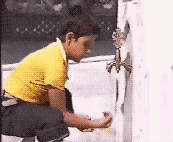
5. Wipe your wet hands over your hair or scalp (all of it backward and forward) and wipe the inside and back of the ears with the forefingers and thumbs.

6. Wash the feet up to and including the ankles three times each, starting with the right foot.
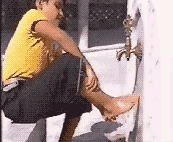
7. After completing the aforementioned, say: “I bear witness none has the right to be worshiped but Allah Alone and without partners, and I bear witness that Muhammad is His slave and His Messenger.”
Attachment 6.C.4.3
Assessment Worksheet
Assessment for the Practices of ablution
Aspects of Value |
Scale |
Mark by teacher |
|
A |
B |
C |
D |
E |
|
- Ways of the ablution
- Appreciate
- Responsibility
- Focus
- Awareness
- Cognitive
|
|
|
|
|
|
|
Note:
A: Very Good B: Good C: Fair
D: Poor E: Fail
Attachment 6.C.4.4
Assessment
What |
How |
Who |
Knowledge
Learners are able to answer the written test |
Written tests |
Teacher |
Problem Solving Skills |
|
Teacher |
Scientific Inquiry Skills
Learners are able to find out the answer based on the observation |
|
Teacher |
Attitude expression
Learner express the happiness and joy during activities of observation |
Scale test |
Teacher |
Value Expression
Learners express their opinion of awareness and responsibility for taking care nearby environment and for appreciation to water utilization |
Scale test |
Teacher |
Personal Expression |
Scale test (practice) |
Teacher |
|











